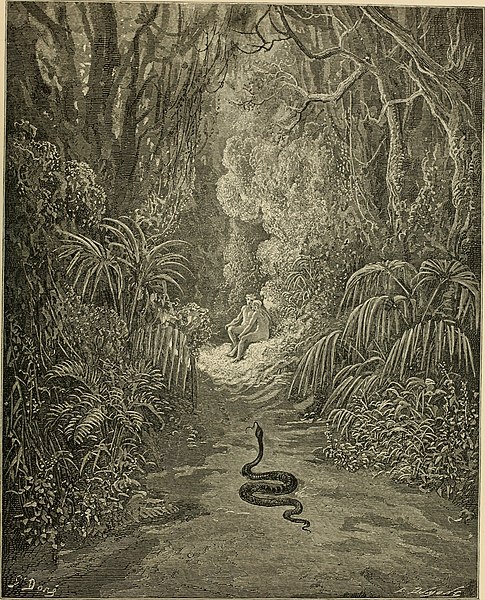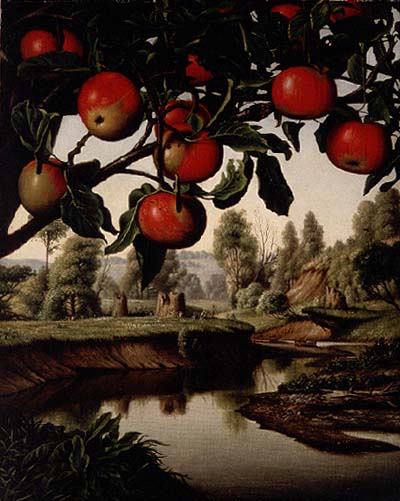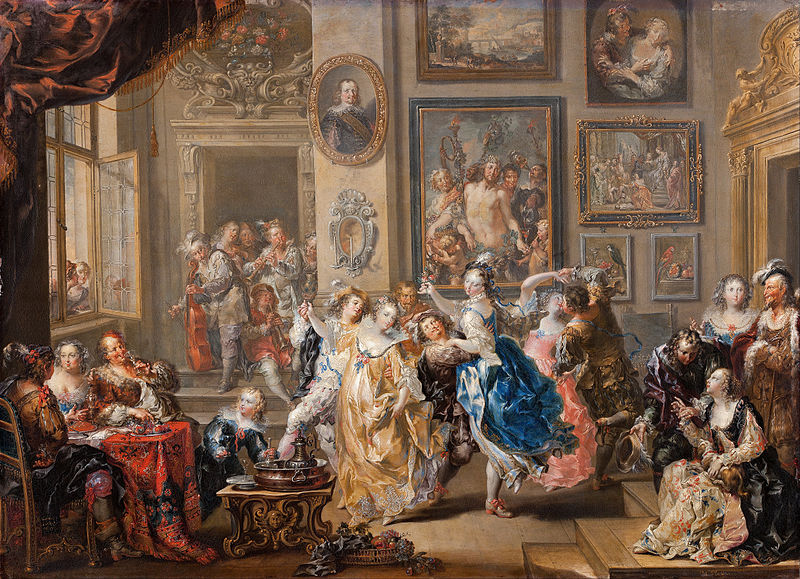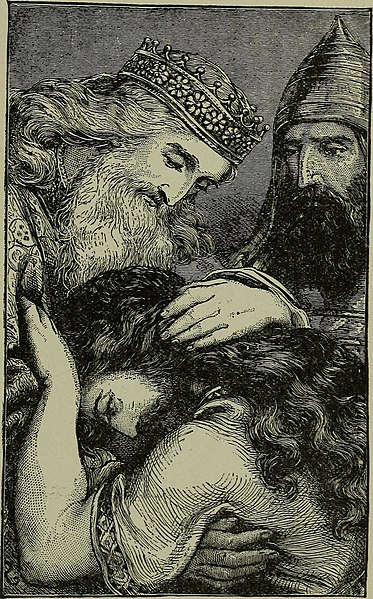We have looked at how mankind fell from their first created state. The Bible tells us God had a plan based on a Promise made at the beginning of history.
The Bible – Really a Library

First, some facts about the Bible. The Bible is a collection of books, written by many authors. It took more than 1500 years to write all these these books from start to finish. This makes the Bible more like a library and sets it apart from other Great Books. If just one author, or a group that knew each other, wrote the books of the Bible its unity would not surprise us. But hundreds and even thousands of years separate the different authors of the Bible. These writers come from different countries, languages, and social positions. But their messages and predictions connect with each other and the facts of history recorded outside the Bible. The oldest copies of the Old Testament books (the books before Jesus) that still exist today are from 200 BC. Existing copies of the New Testament date from 125 CE and later.
The Gospel Promise in the Garden
We see at the very beginning of the Bible an example of how the Bible predicts into the future. Though it records the Beginning, it was written with the End in mind. Here we see a Promise when God confronts Satan (who was in the form of a serpent) with a riddle just after he brought about the Fall of mankind.
“… and I (God) will put enmity between you (Satan) and the woman and between your offspring and hers. He will crush your head and you will strike his heel.”
Genesis 3:15
You can see that this is prophetic by “will” repeated in the future tense. The text specifically identifies five different characters. They are:
- I = God
- you = serpent or Satan
- The woman
- The offspring of the woman
- The offspring of serpent or Satan
The Promise predicts how these characters will relate in the future. The diagram illustrates their future relationships.

It does not say who ‘the woman’ is. But God will cause both Satan and the woman to each have an ‘offspring’. There will be ‘enmity’ or hatred between these offspring and between the woman and Satan. Satan will ‘strike the heel’ of the woman’s offspring. But the offspring of the woman will ‘crush the head’ of Satan.
Who is the Offspring? – a ‘he’
We have made some observations, now for some deductions. Because the ‘offspring’ of the woman is a ‘he’ we can discard some possibilities.
As a ‘he’ the offspring is not a ‘she’ and thus cannot be a woman.
As a ‘he’ the offspring is not a ‘they’. This rules out a group of people, or a race, or a team, or a nation. At various times and in various ways people have thought that a ‘they’ would solve the human situation. But the offspring, being a ‘he’, is not a group of people whether a nation or those of a certain religion as in Hindus, Buddhists, Christians, or Muslims.
As a ‘he’ the offspring is a person and not an ‘it’. The offspring is not a philosophy, teaching, political system, or a religion – since these are all ‘it’s. An ‘it’ like these would have been our preferred choice to fix the corruption since people are always thinking up new systems and religions. God had something else in mind – a ‘he’- a single male human. This ‘he’ would crush the head of Satan.
Notice what is not said. God does not say that this offspring will come from the woman and the man, but only from the woman. This is especially unusual since the Bible almost always records only the sons coming through fathers. Some see the Bible as sexist because it just records fathers of sons. But here it is different – there is no promise of an offspring (a ‘he’) coming from a man. It says only that there will be an offspring coming from the woman, without mentioning a man.
A much later Prophet builds on that Promise
Hundreds of years later, an Old Testament prophet added the following:
the Lord himself will give you the sign. Look! The virgin will conceive a child! She will give birth to a son and will call him Immanuel (which means ‘God is with us’).
Isaiah 7:14, 750 BCE
More than 700 years after Isaiah, Jesus was born (the New Testament says) from a virgin – fulfilling Isaiah. But is this scripture foreseeing Jesus even this early – right at the beginning of human history? This fits with the offspring as a ‘he’, not a ‘she’, ‘they’ or ‘it’. With that perspective, if you read the riddle it makes sense.

Internet Archive Book Images, No restrictions, via Wikimedia Commons
‘Strike his Heel’??
But what does it mean that the serpent would strike ‘his heel’? One year I worked in the jungles of Cameroon. We had to wear thick rubber boots in the humid heat because the snakes lay in the long grass and would strike your foot – your heel – and kill you. After that jungle experience it made sense to me. The ‘he’ would destroy Satan, the serpent. But ‘he’ would be killed in the process. That does foreshadow the victory gained through the sacrifice of Jesus.
‘The woman’ – a Double Meaning
So, if this Promise at the Beginning concerns Jesus, then the woman would be the virgin woman who gave birth to him – Mary. But there is a second meaning. Notice how another Old Testament prophet refers to Israel.
O Israel, … I will make you my wife forever, … I will be faithful to you and make you mine, and you will finally know me as the Lord.
Hosea 2:17-20. 800 BCE
Israel, in the Bible, is referred to as the wife of the LORD – a woman. Then, the last book in the Bible, describes a conflict which this woman will go through with her enemy
I saw a woman clothed with … a crown of twelve stars on her head. She was pregnant, and she cried out because of her labor pains and the agony of giving birth.
Then …I saw a large red dragon … in front of the woman as she was about to give birth, ready to devour her baby as soon as it was born.
She gave birth to a son who was to rule all nations with an iron rod. …
This great dragon—the ancient serpent called the devil, or Satan, the one deceiving the whole world—was thrown down to the earth with all his angels…
When the dragon realized that he had been thrown down to the earth, he pursued the woman who had given birth to the male child… And the dragon was angry at the woman and declared war against the rest of her children…
Revelation 12:1-17, 90 CE
Since Jesus was a Jew, he is at the same time the offspring of Mary, the woman, and Israel, the woman. The Promise came true both ways. The ancient serpent is in enmity with Israel, ‘the woman’, and has declared war on her. This explains the unique troubles that Jews have suffered through their long history, and it was predicted in the very beginning.
The offspring of the Serpent?
But who is this offspring of Satan? In the last book of the Bible, many pages and thousands of years after the Promise in Genesis, predicts a coming person. Note the description:
8 The beast you saw was once alive, but now it is not. However, it will come up out of the bottomless pit and go away to be destroyed. The people who live on the earth will be amazed when they see the beast, because it was once alive, is no longer living, but will come again. These are the people whose names have never been written in the book of life since the beginning of the world.
“You need wisdom to understand this.
Revelation 17:8-9, written by John ca 90 CE
This describes a fight between the offspring of the woman and Satan’s offspring. But it is first revealed in the Promise of Genesis, at the very beginning of the Bible, with the details filled in later. The countdown to a final contest between Satan and God started long ago in the Garden. It could almost make you think that history is really His-Story.
The Biblical Account continues
The drama of that day does not end with this Promise. God next moves to clothe them, a move full of symbolic meaning.
The Biblical account then relates the cataclysmic flood which destroyed almost all of mankind, followed by the origin of different languages and races. After these events God took His first step to complete this Promise above. He did so by calling a man to go on a long journey.








